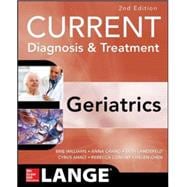An authoritative, one-stop source of answers on conditions commonly encountered among older adults
For more than 70 years, professors, students, and clinicians have trusted LANGE for high-quality, current, concise medical information in a convenient, affordable, portable format. Whether for coursework, clerkships, USMLE prep, specialty board review, or patient care, there's a LANGE book that guarantees success.
- Provides a framework for using the functional and cognitive status, prognosis, and social context of patients to guide diagnosis and treatment of medical conditions
- Applies the principles of geriatric medicine in different care settings to address common clinical scenarios and common geriatric conditions
- Includes valuable information on health promotion and disease
- Delivers essential information on important topics such as delirium, cognitive impairment, dementia, falls and mobility disorders, Parkinson and other movement disorders, sleep disorders, and arthritis
- Covers special geriatric considerations in cardiovascular health, cancers, endocrine disorders, skin problems, respiratory disease, and renal disorders
- Concise, practical, and current diagnostic and treatment information on the most common health problems of older adults
- The best quick reference for busy clinicians who provide care for older patients
- Valuable to students, residents, nurses, nurse practitioners, physician assistants, internists, and family physicians.
- Includes guidance on care in all settings – clinic, home, hospital, and long-term care, as well as pre- and post-operative settings








